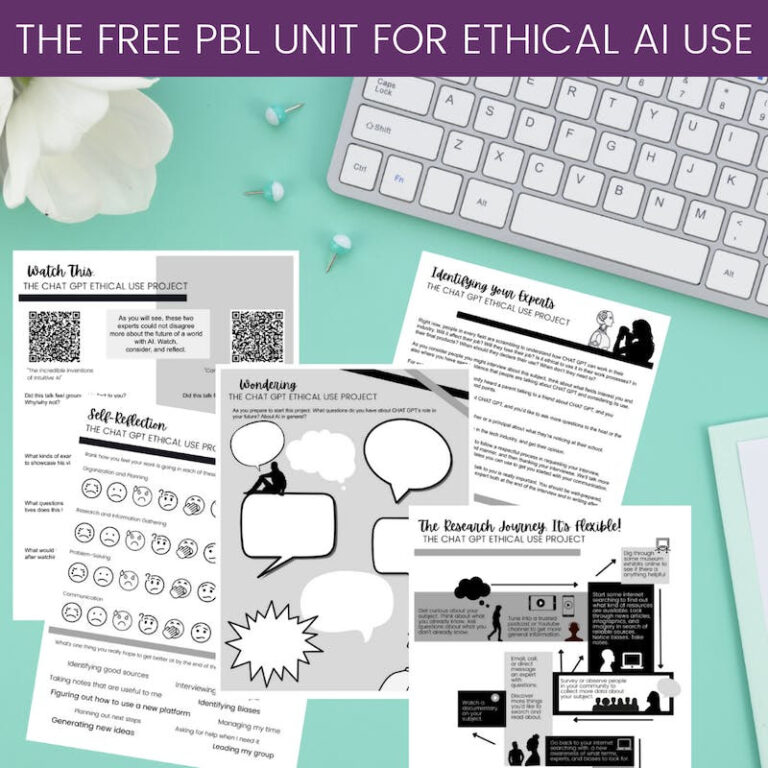Ethics of AI Project
Introduction
Project Overview
At the start of this project, the goal is to help students start to come up with the questions they want to answer, and to dip their toes in a range of different research sources. You’ll show them two Ted talks that come at the questions of AI from very different perspectives, show them an infographic of what their research journey might look like (and it’s not just them sitting at a library with a pile of notecards), share a choice board of possible starting points for finding quality conversation online about AI, and get them jotting down their questions.
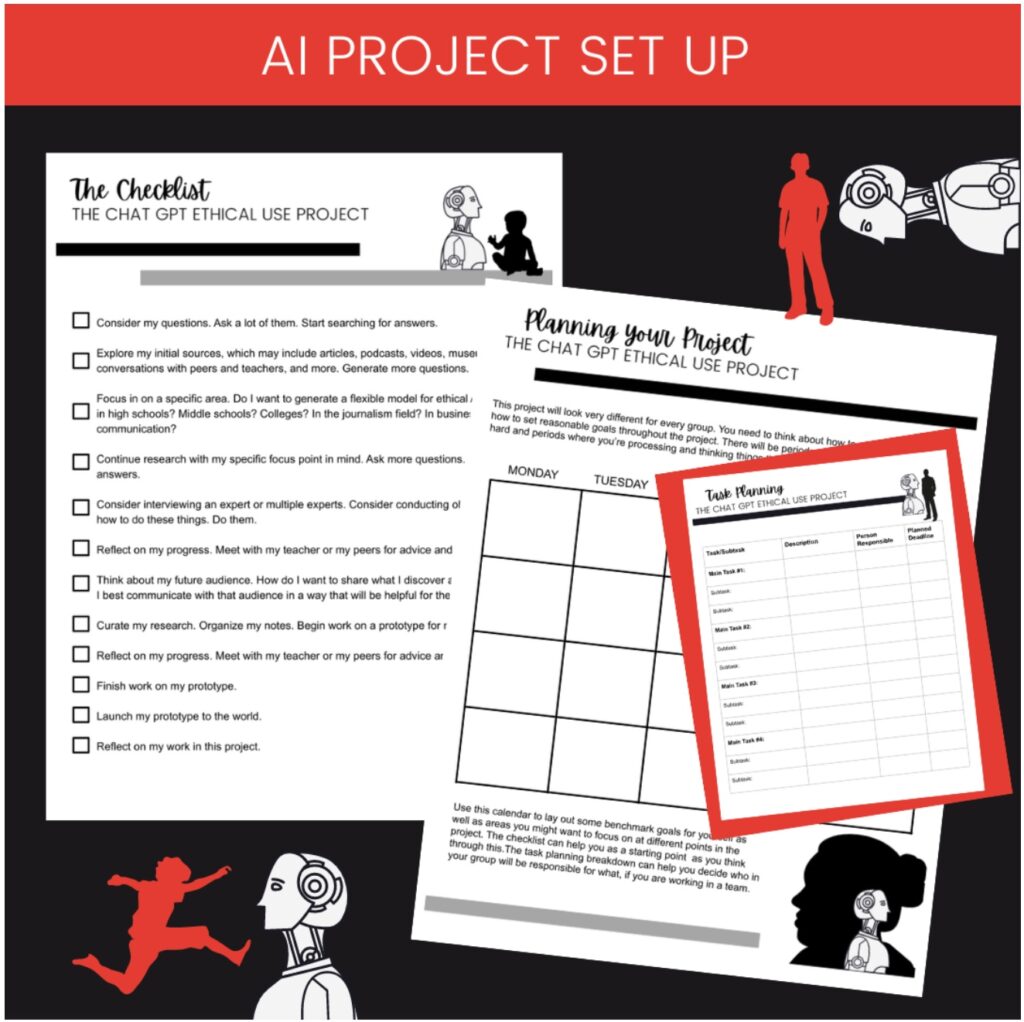
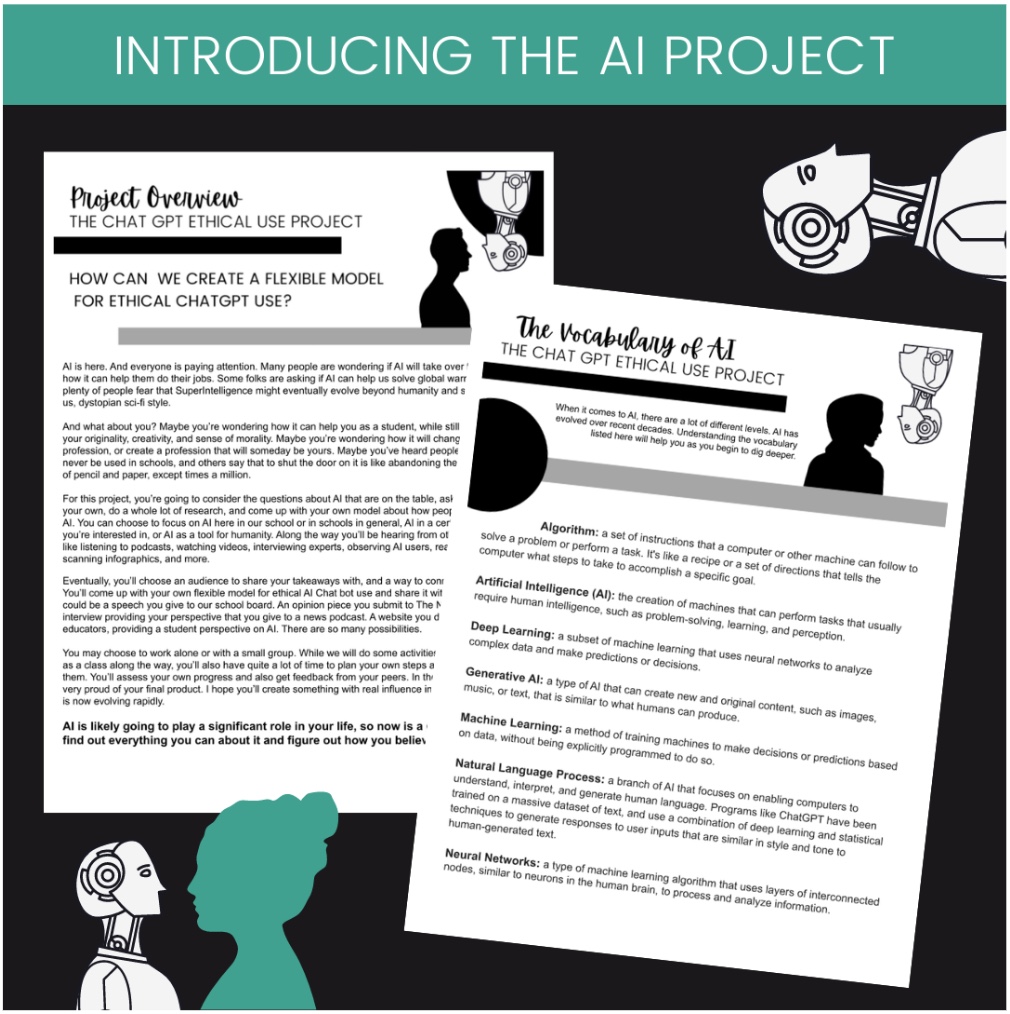
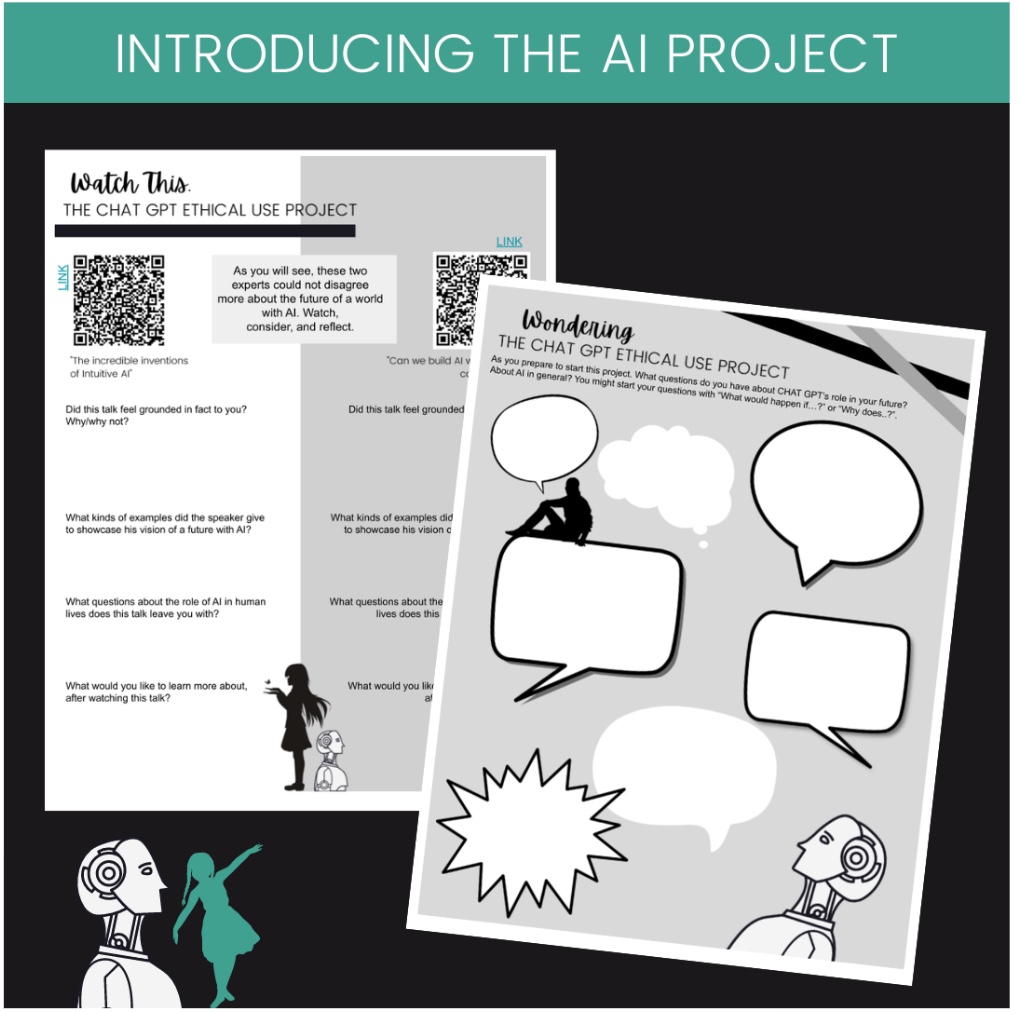
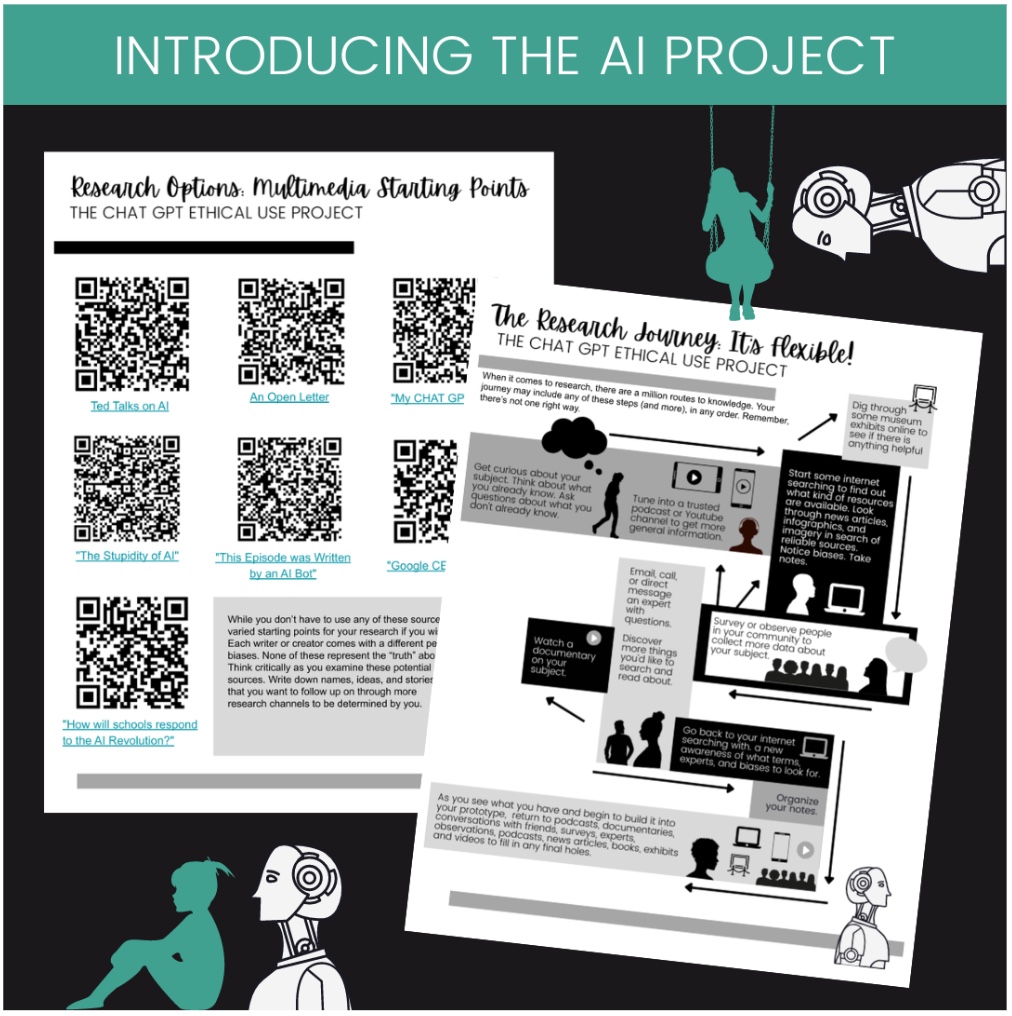
This early stage in the project is also the time for your first mini-lesson. You’ll be weaving in direct instruction at a few points throughout the project. As students begin to collect their sources, you want to make sure they understand citation format. You’ll give them a guiding poster and walk them through or review (depending on the age and level of your students) MLA format, so they can get the information they need from each source along the way.
Once students understand the project and have begun to generate questions, you can move into set up. Students will want to choose groups (or choose to work alone) and begin to organize their time and tasks using the project checklist, calendar, and task planning sheets.
As students begin work, answer questions and check in with groups in class. Early on in their research, you’ll give the mini-lesson on identifying experts in the field and share the templates for reaching out to experts, question stems and interview script example, and thank you letter template. Every student or group should be speaking with an expert in the field as part of their research.
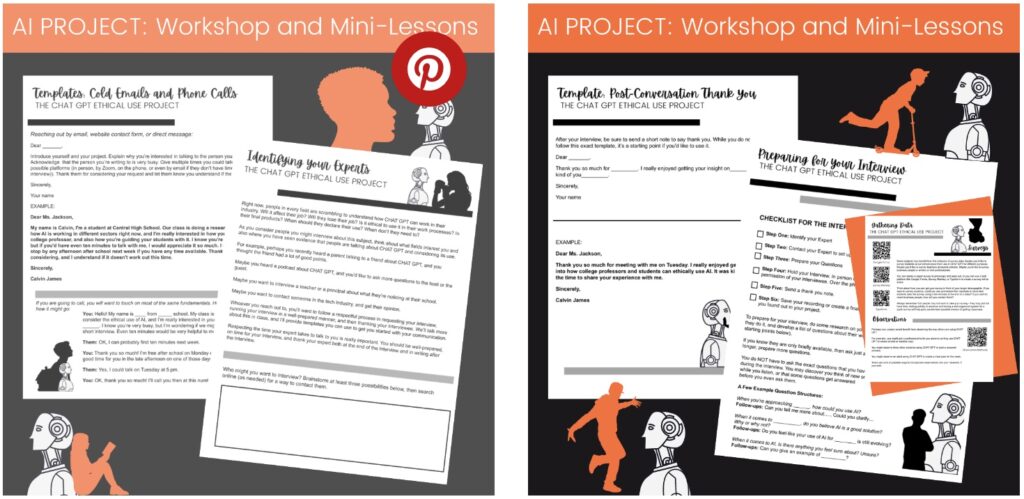
As students continue working, conduct more formal conferences with each group and allow time for individual reflection and plans for improvement. Continue to answer questions and guide students as needed.
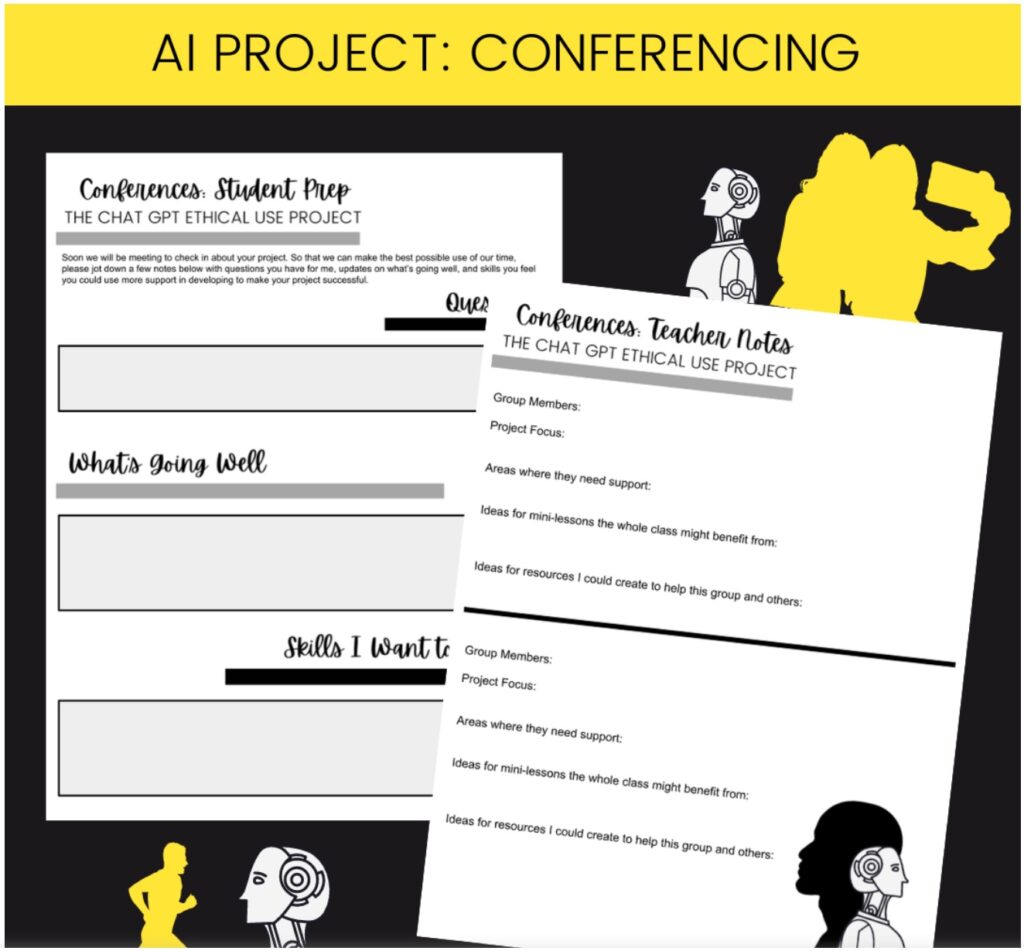
As they finish their expert interviews and get deep into their research, groups will begin to brainstorm prototype ideas using the guiding handout full of ideas for inspiration, then give peer feedback on concepts. At this point, you might spend time on a team-building challenge to help counter project fatigue.
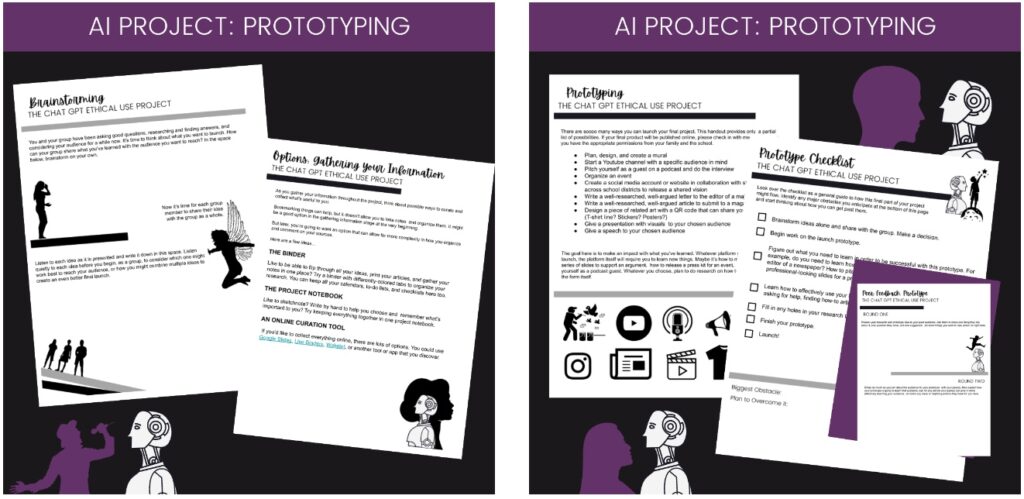
As students launch their final product, take time in class to have students share their final product and its results. Use the final self-reflection (following up on earlier reflection options) and assessment tools to close the project.
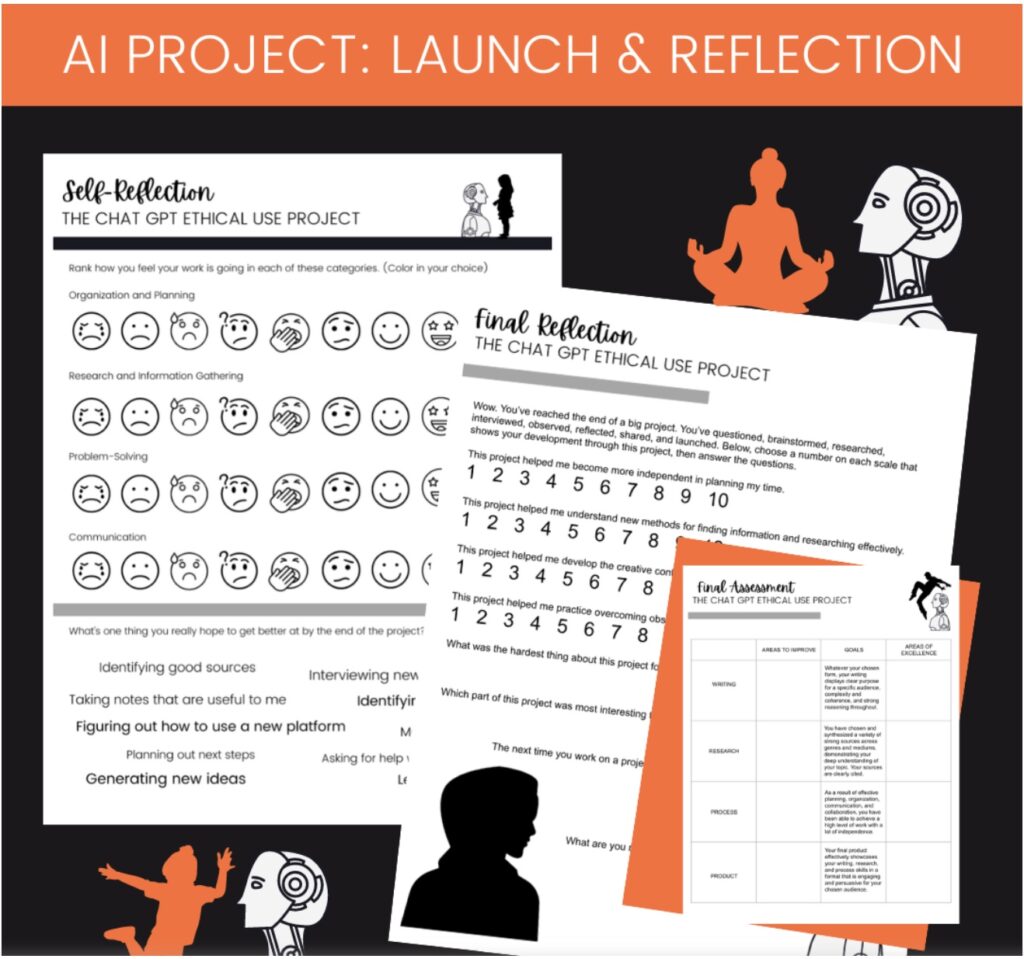
Project Resources
- Spark Creativity Blog Post
- Spark Creativity Podcast Episode
- Spark Creativity Project Files


